Are these questions and objections stopping you from unlocking the potential of Hyperautomation?

Hyperautomation is a mandate for future enterprise sustenance. However, several businesses are still skeptical about leveraging it which slows down their pursuit.
Let’s learn more about these questions and objections that may deter these organizations from pursuing hyper-automation.
1. Hyperautomation is not a one size fit for every business
Hyperautomation is not a universal solution for every business. While there will always be skeptics, some of them may hold influential positions, making it more challenging to secure their support. To get their buy-in, a good approach is to start by qualifying that Hyperautomation is not a product or a one size fits all solution. Instead, emphasize that it is a framework to approach an enterprise goal in various business scenarios.
Case studies across different industries offer valuable insights that can be adapted to similar enterprises. You could take inspiration to innovate a business process based on what you see in another domain.
For instance, one of our clients in the insurance/benefits sector revamped their claims process by drawing inspiration from the Quote-to-Order transformation in the manufacturing industry. Likewise, a banking client re-engineered their mortgage warehouse business process to provide more value potential across the institution.
Finally, organizations must address concerns early and identify a business champion to sponsor the change.
2. Automation is just an IT Project
This is a misguided perspective, Hyperautomation activities are limited to task automation if confined to a single team, department, or treated solely as IT initiatives.
The problem with such an approach is that it focuses only on overcoming immediate issues. Conversely, a hyper-automation mindset is about having a holistic view of end-to-end processes, exploring opportunities for reinvention, and remodeling them to attain goals.
3. Does Hyperautomation Mean Bringing New Applications and Technologies?
The short answer is not necessarily. Hyperautomation is about applying multi-tech strategies to deliver a higher-order experience to your user. The technology to be leveraged depends on the business scenario, existing app systems, and other relevant factors. The idea is to generate this value with the technology that is readily available within your ecosystem, retuning the applications where possible. There might be one or two areas where the systems cannot interact with each other or are outdated. In such situations, it would be better to utilize technologies like RPA to enable seamless processing, use process/task mining technology to accelerate the study of your current processes, and use AI/ML to help step up your business.
4. Is it Hard to Find Hyperautomation Talent?
You will not find Hyperautomation Engineers in the market, as it is not a specific technology or business expertise stream. A Hyperautomation solution needs multiple tools curated for a specific business scenario, so we don’t recommend hiring Hyperautomation-specific talent. Multi-tech, multi-discipline professionals are the future. So, look at building your existing talent base into multi-tech discipline professionals. To kickstart certain segments like process automation, AI/ML, process/task mining, charting your transformation journey, etc., it would be good to onboard specialists in those areas with a hyper-automation mindset and then upskill your current talent pool. You could also engage consultants like SLK to enable you to kickstart and transform ahead.
5. Can We Apply Hyperautomation to Immediate Issues?
Absolutely! The Hyperautomation framework can be applied to small or big scenarios. The core technique of Hyperautomation is to apply task mining, lean / process optimization, RPA, intelligent document processing, AI/ML, etc., and enable rapid solution development. As an enterprise, when you get to the rhythm of Hyperautomation, you will naturally apply it to all ideas and take it forward to value generation. As you gain on the Hyperautomation experiences, the action plans become sharper and the time to value is quicker.
6. Critical Elements that can Make or Break the Hyperautomation pursuit
- Acceptance and realization that hyper-automation is a mandate for future enterprise sustenance
- Rigidity during transformation and beyond can create unnecessary governance layers and hinder the emergence of new ideas.
- These transformations cannot be siloed into one team or department or as an IT project. This needs to be an enterprise initiative.
- True innovations have several failed experiments behind them. Learn from these experiments and recalibrate.
Authored by Gireesh Ullody






